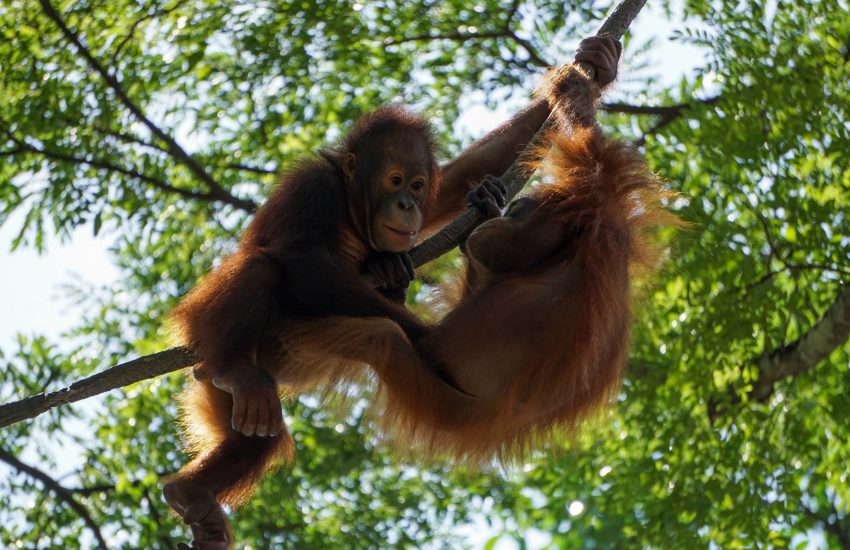The partnership, a platform, a springboard
15 July, 2024


The partnership, a platform, a springboard
15 July, 2024
This is what the economy of the Amazon…
10 July, 2024
Friday 23 october 2020
Header photo: Orang Utan, photo by Stuart Jansen on Unsplash
Rapidly expanding palm oil plantations across Borneo are replacing the habitat of the endangered orang-utan and dwarf elephant. With support from IUCN NL, a corridor has been created between the fragments of rainforest to better the orang-utan’s and elephant’s chance at survival.
Sabah, the Malaysian state on the Southeast Asian island of Borneo, was once entirely covered with dense rainforests. Unfortunately that has changed. In the past decades, large parts of the forests have been converted into palm oil plantations. The production of palm oil in Malaysia, which is used in for example cookies, toothpaste and cosmetics that we buy in the supermarket, surged from 1.3 million tonnes in 1975 to 17.7 million tonnes in 2009. A staggering 20 percent of Sabah’s land is now used to cultivate palm oil. As a result, the situation for the orang-utan, Borneo dwarf elephant and other wild animals that live in the island’s forests has gone from bad to worse as more and more of their natural habitat is being destroyed and fragmented. Living in tiny, isolated forest fragments, the animals can barely find enough food to survive. Fierce rivalry and an increased chance of inbreeding are other factors that may ultimately threaten the existence of these animal species. With an estimated 1,000 individuals left, the dwarf elephant is already critically endangered according to the IUCN Red List of Threatened Species.
With support from IUCN NL and the British World Land Trust local partner organization LEAP (Land, Empowerment, Animals, People) was able to purchase 90 hectares of forest in 2009. This land connects the fragmented patches of forest and now forms part of the Lower Kinabatangan Wildlife Sanctuary, which ensures it is well protected from palm oil farmers. The IUCN NL land acquisition fund enabled LEAP to buy the land.
The improved connection between the isolated forest fragments ensures that animals such as the elephant and orang-utan can move freely across a larger area. It provides a bigger habitat for them to find food and live in. In addition, it encourages genetic exchange to take place between the different subpopulations from other areas, which plays an instrumental role in the survival of these species.

15 July, 2024
'If one partner leaves the alliance, it would feel like the amputation of a leg.' A conversation with Diana Nabiruma…
10 July, 2024
At last year's regional summit Conversations from the Amazon, representatives of Indigenous peoples gathered in Colombia to share knowledge and…
